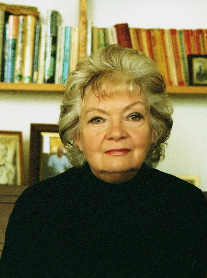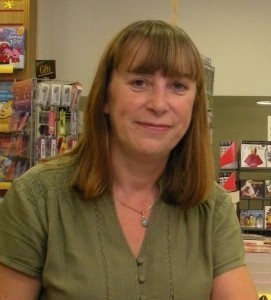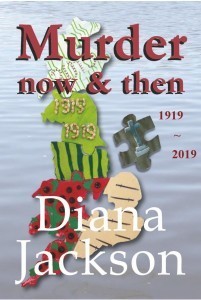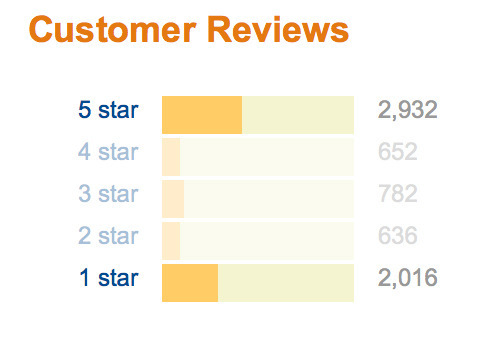Adam Croft's Blog, page 8
January 16, 2015
The 10 Commandments of Detective Fiction
 Back in 1929, Ronald Knox created the Decalogue or Ten Commandments of Detective Fiction, which authors of the Golden Age such as Agatha Christie, Dorothy L. Sayers and Ngaio Marsh largely adhered to. Although many of the rules are logical, some of them seem plain bizarre in 2015. So, are the Ten Commandments of Detective Fiction still relevant today?
Back in 1929, Ronald Knox created the Decalogue or Ten Commandments of Detective Fiction, which authors of the Golden Age such as Agatha Christie, Dorothy L. Sayers and Ngaio Marsh largely adhered to. Although many of the rules are logical, some of them seem plain bizarre in 2015. So, are the Ten Commandments of Detective Fiction still relevant today?
1. The criminal must be mentioned in the early part of the story, but must not be anyone whose thoughts the reader has been allowed to know.
This is a rule which has been broken by Queen of Crime Agatha Christie amongst others and frankly it’s not getting the Ten Commandments off to a good start. If handled carefully, this is a device which can work extremely well.
Having an unreliable narrator is not the cop-out many would claim. There are a number of very viable reasons for using the device, including the narrator suffering from severe mental illness such as post-traumatic stress disorder, the narrator using the narration as a device (a nice twist on the concept) or plain obfuscation by the narrator. The latter is the least credible, but again it depends on the narrator’s reasons for doing so.
2. All supernatural or preternatural agencies are ruled out as a matter of course.
I personally lean towards agreeing with this, although I do often like to throw a paranormal aspect into my books (or, rather, my character Ellis Flint does as he’s often tempted by the lazy paranormal explanation when things are seemingly unexplainable).
The issue here is that by allowing the paranormal to be a viable explanation the author runs the risk of straying into deus ex machina territory, which in the world of detective fiction is pure laziness.
3. Not more than one secret room or passage is allowable.
This is a very odd rule. Secret anythings are risky, particularly if they’re held back right until the end when the mystery is revealed. I’m a fan of trickling all the information through to the reader so that when the mystery is revealed they could have quite easily figured it out for themselves — but, of course, I try to ensure that they don’t.
So should there be a limit on secret rooms or passages? No, of course not. Once they’re revealed they’re no longer secret and whilst they’re secret they should fall under the same rules of withholding clues that anything else would.
4. No hitherto undiscovered poisons may be used, nor any appliance which will need a long scientific explanation at the end.
The unwieldy scientific explanation is sure to bore the reader, particularly if it means they wouldn’t have been able to work it out for themselves without a PhD in Chemistry. Inventing your own poisons is also a bit of a con as far as I’m concerned, and again strays into deus ex machina territory.
5. No Chinaman must figure in the story.
I’m fairly sure I don’t need to explain why this rule is severely outdated.
 6. No accident must ever help the detective, nor must he ever have an unaccountable intuition which proves to be right.
6. No accident must ever help the detective, nor must he ever have an unaccountable intuition which proves to be right.
This is another rule I’m unsure of. Accidents can certainly be used, again as long as they don’t stray into deus ex machina territory. An abstract accident (one which doesn’t actually reveal the solution to the detective but instead leads him or her to some form of lateral thinking) is certainly permissible as far as I’m concerned.
As for intuition, Kempston Hardwick is certainly a man of intuition but I never let this stand alone. He might well often have inklings which lead him to investigate a certain area/person/aspect of the crime but this should not be a bad thing. After all, it’s how real detectives work and how real human beings operate.
7. The detective himself must not commit the crime.
This ties in heavily to rule 1 and is effectively built upon the bedrock of the device known as the unreliable narrator. Handled carefully (in the same manner as the general unreliable narrator device), this device is perfectly permissible and has been used to great effect by some of detective fiction’s biggest names.
8. The detective is bound to declare any clues which he may discover.
This is quite vague and ambiguous, but in general I’d tend to agree in terms of not withholding things from the reader (unless there’s a very good reason to do so and it’s handled very carefully. See Gillian Flynn’s Gone Girl for a masterclass in this).
9. The “sidekick” of the detective, the Watson, must not conceal from the reader any thoughts which pass through his mind: his intelligence must be slightly, but very slightly, below that of the average reader.
Two quite distinct rules here, I think. Firstly, the sidekick isn’t even necessary but is certainly very handy for a number of reasons (that’s a blog post for another day). In terms of withholding thoughts, I’d refer to rule 8.
With regards to the intelligence of the sidekick, there’s a very good psychological reason for having the detective’s intelligence being higher than average and the sidekick’s slightly lower. But how do you know the intelligence of your reader? Affinity with characters is the most important thing, and a lovable fool (like Ellis Flint) can add wonderful depth as a sidekick.
10. Twin brothers, and doubles generally, must not appear unless we have been duly prepared for them.
‘Unless we have been duly prepared for them’ is the key here. Simply unveiling the twin/double line at the end without having set up the possibility beforehand strays into deus ex machina territory.
It’s a device I’ve used in one of my books before but the possibility and a big clue was firmly planted early on in the book, meaning that the reader could easily have formed the theory themselves, had they spotted the clue.
January 13, 2015
The Murder Mystery Writing Process: How Do Writers Do It?
As a murder mystery writer myself, I’ve long been fascinated by the ways in which different writers create their mysteries and plots.
 I’ve read and re-read John Curran’s books which explore and analyse Agatha Christie’s notebooks and have read a lot about how other famous mystery writers constructed their plots and characters and have long wanted to do a bit more digging into the psyche of the modern-day mystery writer.
I’ve read and re-read John Curran’s books which explore and analyse Agatha Christie’s notebooks and have read a lot about how other famous mystery writers constructed their plots and characters and have long wanted to do a bit more digging into the psyche of the modern-day mystery writer.
So, starting today, here’s the first of a series of ongoing interviews with some of the finest mystery writers of our generation, telling us all about how they go about crafting their work.
First up is Lesley Cookman, a British mystery writer best known for her Libby Serjeant series of books, which I can highly recommend.
How do ideas for stories come to you? What’s your usual starting point and how does that process become a first draft?
Sometimes something I’ve experienced personally, heard on the radio or seen on television, and more frequently these days, my eldest son will tell me of a scenario he has come across which mught be a good starting point. He’s a great ideas man!
Then it’s a question of trying to shoehorn the idea into a story for my regular set of characters. Usually the basic idea has to be given a “Murder” title and left to stew while I get on with the current one, as I work in three book contracts.
What about your initial draft? Do you have a set structure or are you less organised?
Each book has just one Word document.
And how much planning do you do before you write the first words? Do you have all of your beats and the story arc in place or do you start writing and see where you go? Is this in a linear fashion or do you write endings/middles first?
I have to write the beginning of the next book at the end of the current one, which means it’s more-or-less set in stone, but then it’s just plunge in and see what happens. Always, linear, though.
How rigidly do you stick to the initial plan, if you have one at all?
I don’t!
So do you usually know who whodunnit beforehand or do you leave this unplanned?
I have been known to change the murderer at the last minute, so it always makes me hoot when a reader tells me they spotted him/her right at the beginning!
What effects does that have on editing? If you don’t plan who the killer is or have to change it, does this leave you with lots of loose ends to tie up?
No, it all seems to tie itself up — at least until my editor has a go at it.
How long does each stage of writing a book tend to take you?
I write two books a year, with occasional other bits and pieces, so a book takes about six months to write.
And finally, what’s your typical writing day like? Is there one?
Not really, although I tend to do emails, social media, and guest posts like this one in the morning, along with any household chores I simply can’t get out of, then spend the afternoon writing. As the deadline gets nearer I’ll spend longer each day — panicking, mostly.
Huge thanks go to Lesley for agreeing to reveal her writing process and habits with us. Please do check out her books and watch this space for further insights into the minds of murder mystery writers…
January 12, 2015
5 Mistakes to Avoid When Writing a Murder Mystery
 Writing a murder mystery is a tricky business. It’s unlike writing most other genres of book in that it generally either requires a lot of careful planning and plotting or one hell of an editing process. I tend to prefer the former.
Writing a murder mystery is a tricky business. It’s unlike writing most other genres of book in that it generally either requires a lot of careful planning and plotting or one hell of an editing process. I tend to prefer the former.
The rules with regards to writing murder mysteries are well publicised (and I have my own thoughts and views on these, which I’ll come to in a later post) but very few murder mystery novels are ruined through omission. On the contrary, including a real humdinger of an error can throw an entire novel out of kilter (and, more often than not, into the bin). Here are 5 mistakes to avoid when writing your next murder mystery…
1. Ensure your killer isn’t guessable
This might sound blindingly obvious, but you’d be amazed at how many writers forget this. They go in for plot twists and building suspense and believe that the action will save them from the fact that their killer is easy to guess. I know. I’ve been there myself. But if that’s the case, you’ve got to admit that you’re not writing a murder mystery; you’re writing a thriller.
A good rule of thumb is to make sure that everyone could’ve done it. Either that or as many people as possible. Blast open the avenues of suspicion and ensure that every character either has a motive, means or opportunity. Create marks of suspicion, as I like to call them, ensuring that no character is completely innocent. If any character should seem completely innocent, it should probably be your killer.
When you give your book to your alpha/beta readers (which you should always do), omit the section where the killer is unveiled and ask them to guess who the killer is or to order the suspects by their likelihood of having done it. If your killer’s near the top of this list, you’ve got some work to do. Leaving three or four viable killers at the end means you can easily change this if you need to.
2. Don’t crowd us with suspects
There’s a fine line between having enough viable suspects to make it difficult to guess the killer and flooding us with names and characters simply to hide poor mystery plotting.
Some mystery writers introduce so many new characters in the first chapter that readers have trouble keeping up. Make sure your characters are distinct, speak differently and act differently. Also ensure their names are different in order to help readers differentiate between them. Don’t forget: even though you may know your characters inside out, this is the first time we’ve met them. It’s akin to being thrown into a huge party where you know nobody.
A good rule of thumb is to write out the alphabet from A-Z and every time you name a character, write their name next to the letter it begins with. That letter’s now taken, so if you name a character John and later want to introduce a Joanne, you’d better just call her Emma or Brenda.
3. Tie up EVERY loose end. No dead-end red herrings!
The concept of the red herring is grossly misunderstood by many new mystery writers. It’s not simply a dud plot line or device you can chuck in to throw the reader off their scent. If a character regularly visits the grave of a murder victim, disappeared from home in the dead of night at the time of the murder or did a runner and skipped the country shortly after, make sure you can explain why.
Tie up all these loose ends and either ensure that every clue is either directly linked to the murder or has a logical explanation which ties in to the resolution. Keep it plausible and explain everything. Dead-end red herrings can infuriate a reader more than most other things in a murder mystery.
4. Make sure we know the killer
The revelation of the killer will mean absolutely nothing if it’s someone we haven’t been introduced to earlier. We should meet the killer early in the book and at least have a passing familiarity with him or her in order to be surprised when they’re revealed.
Think of the murder stories you read about in the newspaper. If you read that a man you’ve never heard of has been arrested for a murder, would you be at all interested or surprised? Not much, probably. But what if it was your friend Mark or the bloke who runs the local chippy? Or the guy who works in your local pub who you vaguely recognise? Even this sort of passing familiarity with a person can blow the effect of the reveal of the killer into epic proportions.
5. Never underestimate your reader
There will always be readers who guess the killer. Even if you’ve got 20 real suspects (and that’s quite a few), you’d only need 20 people to read the book and by law of averages someone will have guessed who the killer was.
This is why you need to be extra careful to mask your murderer and throw a spanner into the works which means they could not possibly have done it. Of course, this will need to be explained at the end as, naturally, all will not have been as it seems.
Agatha Christie was an absolute master of this type of deception. If you haven’t already done so, read And Then There Were None. This is a masterclass in showing you how the impossible killer can become very, very possible indeed.
January 8, 2015
What the Charlie Hebdo Incident Teaches Us about Freedom of Expression

A drawing — not, as has been claimed, by Banksy but by French artist Lucille Clerc.
Yesterday’s attack on the offices of French magazine Charlie Hebdo has been, as expected, very well covered in the press so I won’t go into the details here. Once again, though, the subject of freedom of expression has made its way to the forefront of daily life. Should it be like this in 2015?
That organisations such as English PEN (whom I support both morally and financially) need to exist in the modern age is, frankly, upsetting. That writers and artists are being thrown into jail, tortured and even killed for simply expressing their views is truly abhorrent. We are all people.
We must be careful with our response. To simply declare the perpetrators as extremist nutters whose opinions are not worth a jot would be tantamount to the same gagging order they are trying to impose on us. Both sides must be heard and neither must be declared right or wrong. That is the only way people will ever live in peace. As soon as right and wrong come into the equation, there’s always a victim; a resentment built out of division.
Radical extremists have the same right to express their opinions of us as we do of them and that right must be respected both ways. As soon as either side tries to denounce the opinions of the other with violence, their argument is lost. The old maxim that the pen is mightier than the sword has never been truer. If your opinion differs to others, explain that opinion rationally and sensibly. The pen gives you the power to do that. Everyone has that power and no-one has the right to take it away. The moment we deny freedom of expression to our enemies, we become our enemies.
I may come across as slightly wishy-washy to many, but thousands of years of history has proven that violence never works. If it did, we wouldn’t still be fighting. But do I think there’s ever any justification for violence and the sort of action we saw in Paris yesterday? No. Those actions were entirely unjustified however you look at it and however impartial you try to be. The war in Iraq and Afghanistan divided the world and continues to do so. It is true to say that the groups of radical extremists and the supposedly ‘free’ national governments who cause as much, if not more carnage in return, should both be considered terrorists. Both committed terrible atrocities which can never be forgiven and neither party can be considered morally superior to the other. Both are pond life.
But yesterday’s events are much clearer because this was not an attack from one side on another. It was inherently counter-productive on all sides. It was an attack on our freedom to express our opinions. This was an attack on everyone. It was an attack on the human race.
January 6, 2015
My Publishing Predictions for 2015
 I don’t pretend to be a visionary, nor do I believe I have any more insight than anyone else, but I must say that a lot of the rubbish being spouted from all corners of the internet with people gazing blindly into the future of publishing just doesn’t quite ring true.
I don’t pretend to be a visionary, nor do I believe I have any more insight than anyone else, but I must say that a lot of the rubbish being spouted from all corners of the internet with people gazing blindly into the future of publishing just doesn’t quite ring true.
There’s been a lot of talk about audiobooks and various different forms of media increasing their market share but I just don’t see the logic in it. People like to read. Sure, audiobooks are probably here to stay and they have their place but is it the way the publishing industry is turning? No.
My own predictions for 2015 and the subsequent couple of years are actually pretty simple: nothing much will change. We’re already on the trajectory we’ve been on for a couple of years: eBooks increasing in popularity and traditional printed books still remaining popular for obvious reasons. Amazon is still the number-one provider for both sub-markets and the big name publishers are finally waking up to the digital revolution that happened a decade ago, before most of them were even working in the industry.
So will printed books have died out by the end of 2015? No. Will we all be listening to audiobooks instead? No. Will we all be selling thousands of books in Brazil, Japan and India? No. As far as I see it, it’s business as usual, which might be surprising considering my usual penchant for change and progression.
That’s not to say that there’ll be no changes, though. What I do see is the major publishers improving their offering and embracing the digital market as well as the general public opening up to independent publishing much more and further embracing it as a viable and respected form of publishing. And those can only be good things.
August 18, 2014
This is a test post
 Lorem ipsum dolor sit amet, consectetur adipiscing elit. Maecenas pellentesque, metus id vestibulum dapibus, massa arcu varius lacus, quis convallis urna lectus vitae turpis. Donec eget lacus velit. Vivamus vulputate tincidunt turpis ac accumsan. Fusce et malesuada arcu. In urna lacus, ullamcorper ac justo nec, porta molestie arcu. Vestibulum dapibus felis sed vehicula ultricies. Nunc rutrum leo eu mauris pellentesque, id semper mi blandit. Aenean scelerisque imperdiet orci, sodales posuere orci laoreet ac. In blandit ultrices interdum. Pellentesque sed dui eget purus tincidunt sollicitudin. Duis malesuada metus risus, vitae blandit risus laoreet eget.
Lorem ipsum dolor sit amet, consectetur adipiscing elit. Maecenas pellentesque, metus id vestibulum dapibus, massa arcu varius lacus, quis convallis urna lectus vitae turpis. Donec eget lacus velit. Vivamus vulputate tincidunt turpis ac accumsan. Fusce et malesuada arcu. In urna lacus, ullamcorper ac justo nec, porta molestie arcu. Vestibulum dapibus felis sed vehicula ultricies. Nunc rutrum leo eu mauris pellentesque, id semper mi blandit. Aenean scelerisque imperdiet orci, sodales posuere orci laoreet ac. In blandit ultrices interdum. Pellentesque sed dui eget purus tincidunt sollicitudin. Duis malesuada metus risus, vitae blandit risus laoreet eget.
Aliquam scelerisque nunc in augue placerat, elementum iaculis lorem porta. Curabitur at arcu auctor, luctus magna vel, malesuada mi. Suspendisse pharetra vel orci vitae bibendum. Sed tempus odio vitae quam mattis, quis aliquam felis egestas. Morbi euismod sapien justo, imperdiet iaculis lacus consequat vitae. Maecenas molestie nibh non est interdum, gravida vulputate turpis tristique. Quisque euismod nisl ut orci pretium, ut euismod urna aliquam.
Phasellus et vulputate felis. Suspendisse dignissim eleifend risus a accumsan. Integer tincidunt interdum nisl, dignissim sagittis neque ultricies at. Morbi malesuada ac tortor a ultricies. Praesent libero dui, vestibulum at adipiscing in, molestie facilisis nisi. Ut ut adipiscing augue, in auctor odio. Phasellus luctus, leo sit amet dignissim viverra, quam velit fermentum metus, quis vestibulum magna dolor vitae arcu. Donec interdum quam quis orci faucibus semper. Phasellus vulputate neque in nunc tempus, sit amet feugiat lacus malesuada. Aliquam vitae magna commodo dui placerat cursus. Nullam ac rutrum sapien. Aenean tempus urna est, eget sodales purus suscipit ut. Cras dictum arcu pellentesque, viverra magna ut, scelerisque orci. Donec libero erat, accumsan id quam a, malesuada fermentum arcu. Donec hendrerit sollicitudin tellus, vitae cursus justo molestie nec.
Quisque dignissim lorem enim, eu consectetur lacus adipiscing ornare. Nulla mollis ac sapien et varius. Curabitur hendrerit erat magna, eget mattis turpis pellentesque id. Nam ornare iaculis erat, ac feugiat ipsum. Cras sed congue dolor. Phasellus scelerisque congue nisl, quis scelerisque ipsum feugiat vel. Suspendisse sed ipsum sit amet eros vulputate vehicula at sit amet ligula. Quisque ornare nibh et congue aliquam. Duis quis est ut libero aliquam aliquet eu eget augue. Phasellus nec leo euismod, blandit urna in, aliquam tellus. Sed placerat porta nisi, nec interdum erat laoreet at. Nunc quam libero, egestas non eleifend sed, fringilla sit amet eros. Nulla facilisi. Phasellus congue tempus lorem in consequat.
Quisque volutpat turpis erat, ac blandit quam posuere sit amet. Fusce in tortor dignissim, pellentesque augue et, hendrerit dui. Cras ac aliquam ipsum, sed tincidunt sem. Vestibulum ut elementum lorem. Nulla facilisi. Ut quis arcu dolor. Curabitur ante felis, ultrices non consectetur ut, aliquet a nibh. Vivamus vel orci viverra, posuere tellus sed, imperdiet mauris. Etiam vel sapien rhoncus, tristique justo vitae, hendrerit ipsum. Phasellus vel lorem bibendum nulla porta dapibus lacinia sed erat. Nulla ut erat posuere, sagittis est ut, pretium eros. Mauris elementum tincidunt tortor id facilisis. Class aptent taciti sociosqu ad litora torquent per conubia nostra, per inceptos himenaeos.
The post This is a test post appeared first on Adam Croft.
August 11, 2014
Hello world!
Welcome to WordPress. This is your first post. Edit or delete it, then start blogging!
The post Hello world! appeared first on Adam Croft.
June 16, 2014
Interview with Diana Jackson
 Diana has been a good friend of mine for a few years now, but as she usually writes traditionally-published historical romance fiction it would’ve been a little incongruous to have featured her on this blog. However, she’s recently independently published a murder mystery novel, Murder Now & Then, which I read prior to its publication and can heartily recommend.
Diana has been a good friend of mine for a few years now, but as she usually writes traditionally-published historical romance fiction it would’ve been a little incongruous to have featured her on this blog. However, she’s recently independently published a murder mystery novel, Murder Now & Then, which I read prior to its publication and can heartily recommend.
I spoke to Diana just before the launch of her book and asked her a bit more about the book as well as what inspired her to write her historical romance books based on the island of Alderney.
What first drew you to the island of Alderney and sparked your fascination and passion for the area?
Family holidays on Alderney when in my early teens are filled with happy memories, but it was not until we visited as adults that my father began to talk of my great-grandmother Harriet, who was born on Alderney in 1865. I stood looking out from the Butes — the very place my blog photo is taken in fact, and tried to imagine her life at a time when the island had 5,000 inhabitants (there are only around 2,000 today). This included military personnel and workers on the various forts which are dotted around the coastline. Intrigued, I spent a summer of intensive book research which eventually led to the writing of my debut novel Riduna, a name that Alderney is also known by.
How much research and preparation goes into writing historical romances before you finally sit down and type ‘Chapter 1′?
My research for Riduna was spent with my head in often dusty tomes, whereas for Ancasta ~ Guide me Swiftly Home, its sequel, I reached out to experts in their field: archivists at the Shuttleworth air museum — an authority on early flying boat development and the Schneider Trophy, who lives in Calshot; the curator of the Hampshire Regimental Museum in Winchester and also, more unusually, to a fisherman, well known on Alderney, who gave me a fishing lesson and checked through the relevant chapters. Several of the above people kindly read the whole manuscript prior to print to check for authenticity. The research led the plot, rather than the other way around. It was also professionally proofread and edited.
 On to your new book, what gave you the idea and inspiration for trying your hand at a murder mystery?
On to your new book, what gave you the idea and inspiration for trying your hand at a murder mystery?
I was in touch with GreatWarCI, the Channel Island Great War group whilst researching for Ancasta ~ Guide me Swiftly Home and one of them sent me a ‘did you know…’ email. It was regarding a lass from Jersey in 1919 who was murdered in Haynes, Bedfordshire, only three miles from where I live. Although there were rumours at the time and one man stood trial, there was never a conviction. I visited the grave in Haynes and this sparked the plot of Murder Now and Then. I don’t think any author can explain where the ideas come from as their novel evolves. The story is set in 2019, the anniversary of Lucille Vardon’s (not her real name) death, with flashbacks to the original story. I already had an idea of a murder mystery for a short story and these threads merged quite naturally.
How different was the process of writing, compared to your usual style of work?
Writing the murder mystery was far more complicated in many ways. In order to have ‘red herrings’ and subplots to disguise the truth (although there are hints along the way) I tried a linear time line but ended up with a large board of post-its for each of the key characters on one axis and time on the other. I had an idea of where each chapter was heading but, if there was something not quite right, I’d sleep on it or go and do something completely different and invariably the solution had come to me by morning.
How much research went into looking at policing procedures?
I read a great deal of crime novels over the last couple of years which follow a pattern of procedure and I was also put right on a couple of key issues by my beta readers, but I had the advantage that I was projecting into the future. I reasoned that procedures may be quite different in 2019. I had to predict enough change to make it believable without it being sci-fi, which it was never intended to be. Unlike many crime novels, the police are not the key characters in the novel but I did want them to be thought of as real people with their own issues.
 Do you write purely for entertainment or do you try to deliver some form of message through your work?
Do you write purely for entertainment or do you try to deliver some form of message through your work?
Of course my novels are to entertain, but I hope, too, that readers find they gain a greater awareness of the events and social history explored in the Riduna series. These novels are also about issues pertinent to today, for example displacement and that powerful magnetism of the place of our family roots (also reflected in Murder Now and Then). Murder Now and Then, however, explores the unexpected consequences of our actions and those of our ancestors, decision and the cards life has dealt us. I don’t see any of my characters as inherently evil. Neither is it a tale of two cops solving a murder mystery — far from it. The story unravels as you get to know the characters and their vulnerabilities and strengths.
A nice fun one — If your books were adapted for TV or film, who would you see playing the main roles?
In Murder Now and Then I would love Penelope Wilton to play Joanna, the farmer’s wife. I could certainly see her being a bit bohemian and can imagine her assuming a believable role of the accused.
I would also choose the less well known Rene Muren, who’d be great to play Anna Beret because she actually comes from Jersey. With make-up and costume she could also play the part of Lucille Vardon, her distant relative who was murdered in 1919.
Diana’s books can be found on Amazon and other good retailers (please note that the Kindle version of Murder Now and Then sports a different cover to the paperback), and more information can be found on her websites:
March 28, 2014
This is the article the Huffington Post refused to publish
Some of you might be aware that I have a column at The Huffington Post. On 28th March 2014, I wrote an article, which I have reproduced in its entirety below, in which I attacked certain sections of the media (mainly social media) for declaring people guilty before trial. The Huffington Post refused to publish the article.
The reason given was that they didn’t want to focus on any articles which discuss ongoing legal matters. This is the same Huffington Post which carried the following stories today:
Brit Alex Hollinghurst Dead After Teen And Boyfriend Brandon Goode ‘Shoot’ US Police Officer Robert German
Oscar Pistorius Trial Postponed As Murder Accused Paralympian Set To Take The Stand
Keith Blakelock Murder Trial Witness Tells Court ‘All Blacks Look Alike’
And they’re just three that I found within the first two minutes of casually browsing the front page. Double standards much? Or are they perhaps worried about something else? Could it be the fact that it’s their website and their articles which is often guilty of condemning potentially innocent people?
Here’s the article in full, of which they halted the publication. You can decide for yourself.
With all of the news about missing planes and trigger-happy South Africans recently, it would be easy to miss the story that a male nurse has been re-arrested in connection with the deaths of three patients at Stepping Hill Hospital in Stockport. You also might have missed the news that Jimmy Tarbuck has had all charges dropped against him in relation to allegations of sex offences. These two stories both went largely ignored, yet remain intrinsically linked.
The link is innocence. Back in 2011, Rebecca Leighton was questioned by police in connection with the Stepping Hill murders. The internet, as it does, went apoplectic. People were calling for the death sentence. In a moment of level-headedness, I posted a tweet appealing for calm, stating that she hadn’t even been charged, let alone found guilty in a court of law, and that she should not even have been named in the media. In response, I received a barrage of tweets from people saying I was defending her and should be ashamed of myself. I even received a series of tweets from the granddaughter of one of the murdered Stepping Hill patients, stating that she hoped members of my family were murdered too.
All charges against Rebecca Leighton were dropped. A similar pre-Twitter event occurred with the arrest of Christopher Jefferies, who was arrested for the murder of Joanna Yeates. He, too, was cleared and Vincent Tabak was sentences for her murder. At the time I publicly stated that I wasn’t entirely convinced Jefferies was guilty. Something didn’t seem quite right. Perhaps it’s my background as a crime writer which gives me some sort of developed intuition into guilt. Who knows? Either way, this isn’t me saying ‘I was right all along’. Well, it is, but not about that. It’s me saying I was right all along that we should not be so quick to judge people just because they’ve been arrested for something.
Anyone can be arrested for anything. I could leave my house and walk to the shop now and find out that a bald bloke wearing a terrible shirt committed a horrible murder around the corner twenty minutes ago. I’d then be arrested and questioned by the police. To be honest, I’d be pretty pissed off if that was then reported in the newspaper. I’d be even more pissed off if the general public took to social media to declare me guilty. Wouldn’t you? Consider it. You could be next.
The justice system goes like this: You get suspected, then arrested, then charged, then sentenced in court. Until that very last part has been completed, you’re innocent. That’s the law. Let’s all have some humility and do our best to remember that.
March 12, 2014
What Should Authors Do about Bad Reviews?
 Receiving a bad review can be one of the most distressing things for an author. Trust me, it doesn’t get any easier with time or frequency, so the upshot is that you’re going to have to learn to deal with it.
Receiving a bad review can be one of the most distressing things for an author. Trust me, it doesn’t get any easier with time or frequency, so the upshot is that you’re going to have to learn to deal with it.
Maybe you think this doesn’t concern you. After all, your new book is great, right? Perhaps it is. Either way, it’s going to get bad reviews. Here’s the simple bit: all books get bad reviews. Any book exposed to enough readers will be on the end of an absolute slating from some corner or other. That’s the subjective nature of art. Take a look at some of the reviews below, which I’ve taken from Amazon:
All I can say is that I think this is one of the most boring and, at times frankly irritating, murder mysteries I’ve ever read. I didn’t think there was any suspense or any shocks … The characters are not engaging in the slightest – I was almost willing them to be killed off. I forced myself to finish the book because I stupidly paid £4.99 for it, but otherwise would have abandoned it early on. (The only reason I bought it was because it had so many fantastic reviews, which I am at a complete loss to explain.) I couldn’t wait for it to finish as it was a tedious tome from the start. I’m only surprised that so many people enjoy this tripe!
Sounds terrible, right? In fact, I can attest to that book actually being one of the greatest murder mysteries of all time. Perhaps the greatest. It’s also the third-biggest-selling book of all time in the English language, and has shifted more than 100 million copies. It’s Agatha Christie’s And Then There Were None.
How about another?
This is the single most appallingly (sp.) overrated nonsense I have ever had my displeasure to read. It starts badly and just gets worse. The descriptions are turgid, the characterisation unbelievable and the use of language frighteningly dull.
Truth is I have never managed to get past the first of the three books that make up this shockfest. When I say always I must confess that I have attempted to read this thing three times and always come to the same conclusion – it is too bad to be worthy of my time.
Wow. What a stinker of a book. Nope, it’s J. R. R. Tolkien’s Lord of the Rings trilogy. The second-biggest-selling book of all time, with more than 150 million copies sold and a huge film franchise behind it.
How about this, then?
A very disappointing book – only the opening and closing quotations of note. Heavy handed prose, characters have no depth and the central theme … just doesn’t work and fails to convince…
Well you’re good at spotting patterns, anyway. That’s Charles Dickens’s A Tale of Two Cities, the best-selling book of all time with more than 200 million copies sold. What I’m trying to say is that even the three most popular books of all time will still receive a terrible review from time to time.
Of course, Amazon wasn’t around then but I’m pretty sure there’d have been bad reviews in the press for A Tale of Two Cities in the 1850s, too. Had Dickens succumbed to them and believed them, Great Expectations might never have existed two years later. Had Christie decided enough was enough, we’d have missed out on 40 of her 66 novels.
Read this words and then read them again until they’re firmly lodged in your mind: A bad review does not equal a bad book. In fact, no books are bad. All books are purely subjective and all reviews are only the reviewer’s opinion — nothing else. One of my books has a review saying ‘This is the best book ever’ and another saying ‘This is the worst book ever’. They can’t both be right. In fact, they are. And they’re both wrong, too. Opinion is subjective, and for one reader it was the best book he’d ever read and for the other it was the worst.
Oh, and whatever you do, don’t respond to negative reviews. It never ends well. The trick is to separate yourself from the book. The review is someone’s opinion of your book; it’s not a fact about your book and it’s certainly not a criticism of you personally.
Do you have any tips for dealing with criticism and bad reviews? If so, leave a message in the comments box below.



